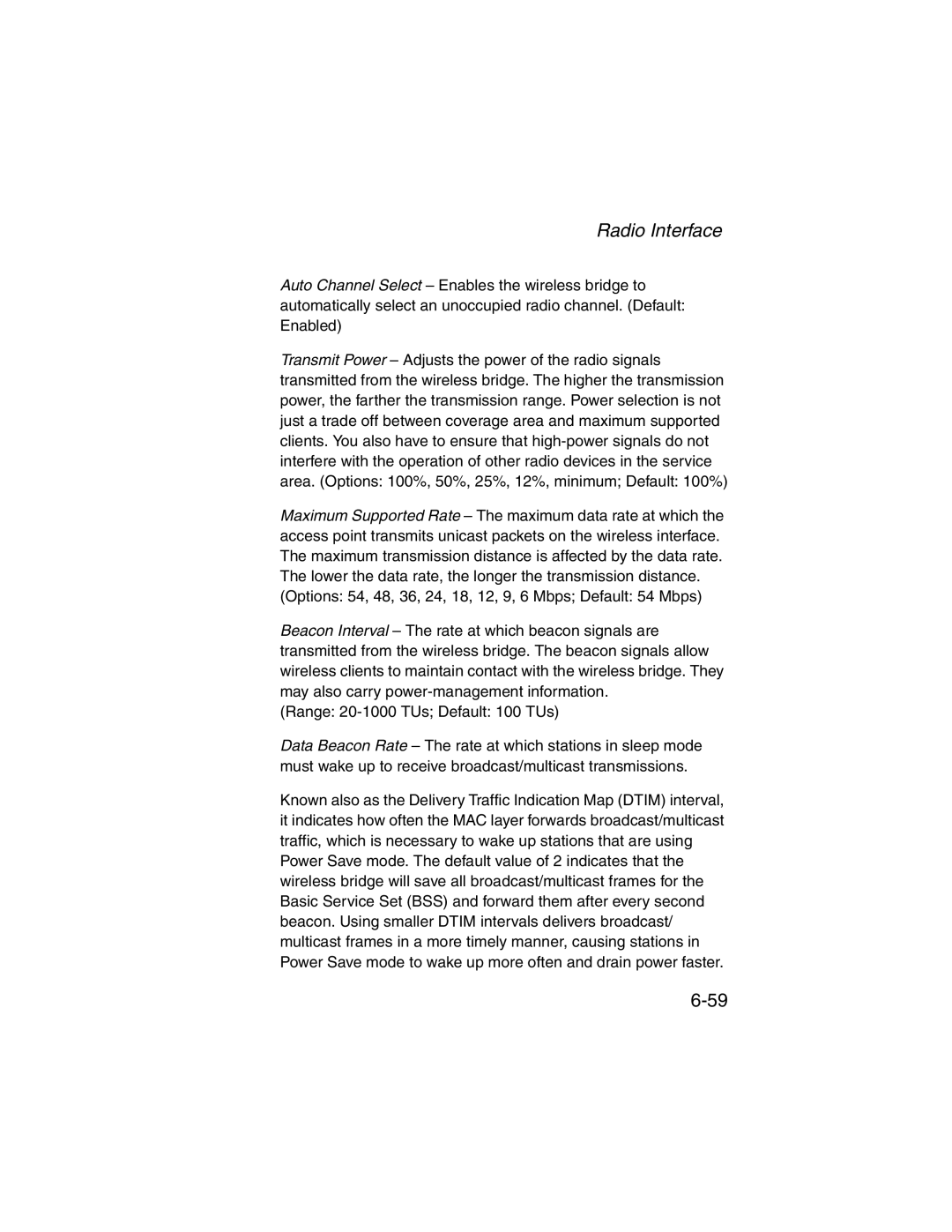Radio Interface
Auto Channel Select – Enables the wireless bridge to automatically select an unoccupied radio channel. (Default: Enabled)
Transmit Power – Adjusts the power of the radio signals transmitted from the wireless bridge. The higher the transmission power, the farther the transmission range. Power selection is not just a trade off between coverage area and maximum supported clients. You also have to ensure that
Maximum Supported Rate – The maximum data rate at which the access point transmits unicast packets on the wireless interface. The maximum transmission distance is affected by the data rate. The lower the data rate, the longer the transmission distance.
(Options: 54, 48, 36, 24, 18, 12, 9, 6 Mbps; Default: 54 Mbps)
Beacon Interval – The rate at which beacon signals are transmitted from the wireless bridge. The beacon signals allow wireless clients to maintain contact with the wireless bridge. They may also carry
(Range:
Data Beacon Rate – The rate at which stations in sleep mode must wake up to receive broadcast/multicast transmissions.
Known also as the Delivery Traffic Indication Map (DTIM) interval, it indicates how often the MAC layer forwards broadcast/multicast traffic, which is necessary to wake up stations that are using Power Save mode. The default value of 2 indicates that the wireless bridge will save all broadcast/multicast frames for the Basic Service Set (BSS) and forward them after every second beacon. Using smaller DTIM intervals delivers broadcast/ multicast frames in a more timely manner, causing stations in Power Save mode to wake up more often and drain power faster.
